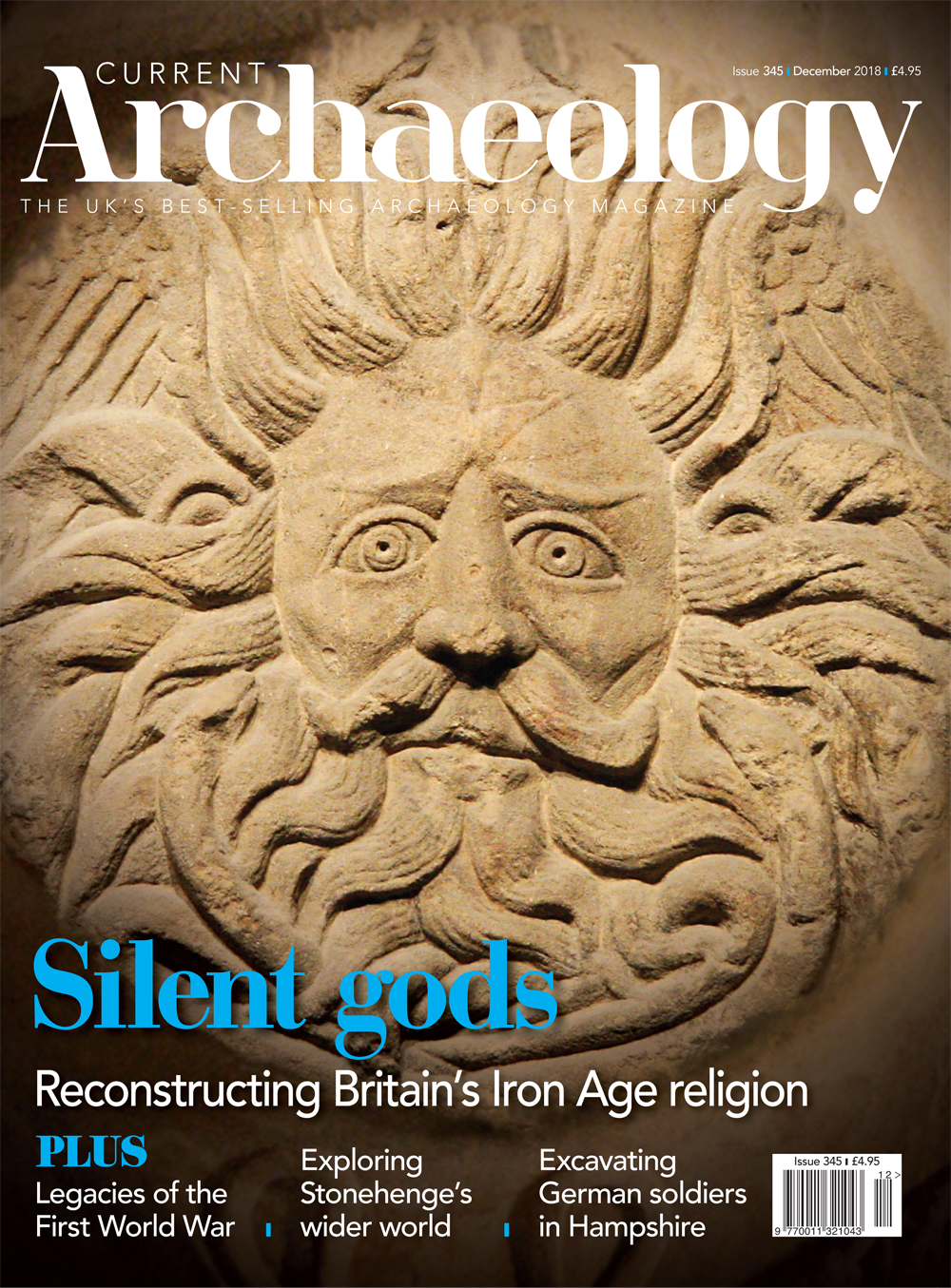This month marks 100 years since the end of the conflict that was supposed to be ‘the war to end all wars’ – sadly, it was anything but. The personal, political, and physical consequences of the First World War have enduring echoes, and although Britain’s landscape was spared the ravages of trench warfare, we can still trace the legacy of this war in our historic environment. Marking the centenary of the Armistice, we explore some of these archaeological clues.
In the mid-18th century, political relationships with our European neighbours were dramatically different. During the Seven Years War, Britain’s ruling powers were so concerned about French invasion that they installed thousands of German soldiers in Hampshire to guard against such threats. Recent excavations outside Winchester have revealed their camp once more.
The feared French invasion never came to pass, but another army that arrived some 1,700 years earlier – the legions of Rome – revolutionised Britain, including its religious practices. Is it possible to trace the Iron Age beliefs that these new rites eclipsed?
Cultural exchanges between Britain and the European mainland ebbed and flowed dramatically throughout prehistory. In the early Neolithic and Bronze Age, these links allowed the flow of both people and influential new ideas across the Channel. Yet during the late Neolithic period, Britain seems to have become more inward-looking, with intriguing artistic results. What can we learn from these contrasting episodes?
Finally, ambitious prehistoric journeys also lie at the heart of this month’s ‘In Focus’, which brings us the latest revelations from the Preseli hills in Wales, thought to have been the home of the Stonehenge bluestones.
Carly Hilts
/n
IN THIS ISSUE:/n
FEATURES/n
THE HESSIANS OF BARTON FARM/n
Uncovering when a German army defended Britain
In the mid-18th century, thousands of German soldiers were stationed in Hampshire to help guard against the threat of French invasion during the Seven Years War. A recent excavation outside Winchester has revealed the remains of their camp.
RITES BEFORE ROMANITAS/n
Reconstructing Britain’s Iron Age beliefs
Effectively eclipsed by the invasion of the Romans and their pantheon of gods, the religious beliefs of Iron Age Britain have long remained enigmatic. How far can archaeology help to illuminate this shadowy picture?
‘THE WAR TO END ALL WARS’/n
Uncovering the legacies of World War I
It has been 100 years since the end of the First World War, but its physical impact on Britain can still beappreciated through the buildings, earthworks, airfields, and wrecks that can be found across the country.
FORGING CONNECTIONS/n
Exploring the wider prehistoric world of Stonehenge
During the early Neolithic and Bronze Age, ideas and people flowed freely across the Channel. In the later Bronze Age, however, Britain seems to have become more inward-looking. A new exhibition explores the ebb and flow of our prehistoric predecessors’ interactions with continental Europe.
MOVING MONOLITHS/n
New revelations from the Preseli bluestone quarries
What can the latest research focusing on Carn Goedog and Craig Rhos-y-felin in Pembrokeshire add to our understanding of the possible sources of the Stonehenge bluestones?
NEWS/n
Hiding in plain sight: a ‘lost’ medieval tower in Derry?; Possible birthplace of Henry VII brought to light; Revealing the Roman dead in North Lincolnshire; Stirling Blackfriars found; Investigating the prisoners of Spike Island; Archaeology awards; Science notes; Early Roman settlement in Yorkshire; Finds tray
NEWS FOCUS/n
Highlights from the CARD fund: a community radiocarbon dating initiative bears fruit
REGULARS/n
Comment
Joe Flatman excavates theCAarchive
Context
Monumental memories: Stonehenge
Reviews
The Old Stones: a field guide to the megalithic sites of Britain and Ireland; The World of the Newport Medieval Ship; The Bioarchaeology of Ritual and Religion; From Roman Civitas to Anglo-Saxon Shire; Links to Late Antiquity; Archaeologists in Print: publishing for the people
Exhibition
The Queen’s Diamond Jubilee Galleries at Westminster Abbey
Calendar
Our selection of exhibitions and events
Sherds
Chris Catling’s irreverent take onheritage issues
Odd Socs
Cambridge Archaeology Field Group

